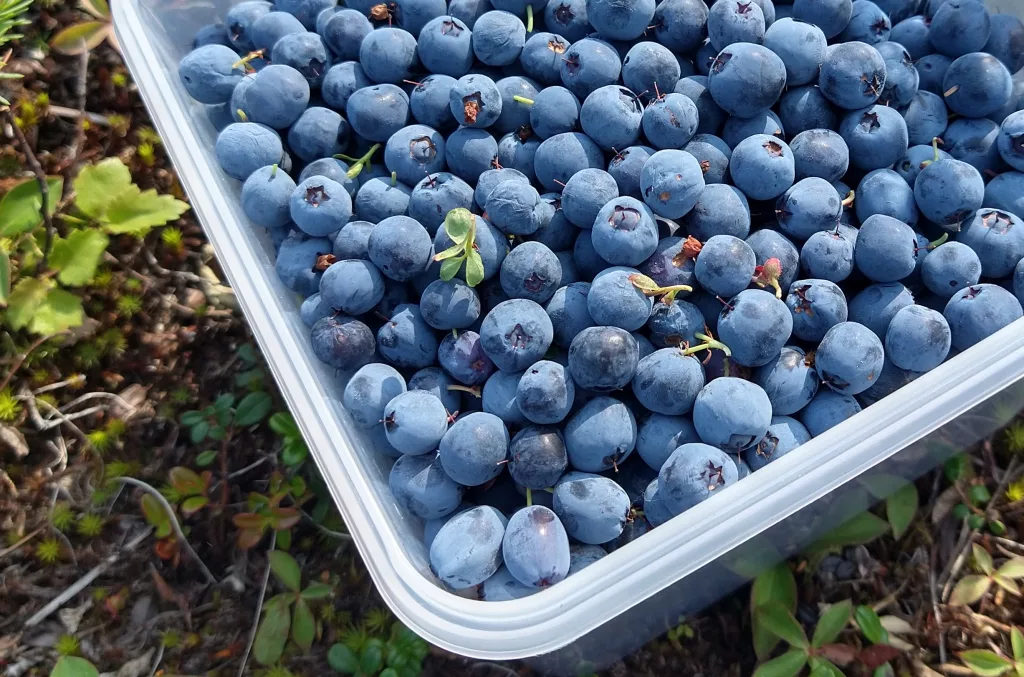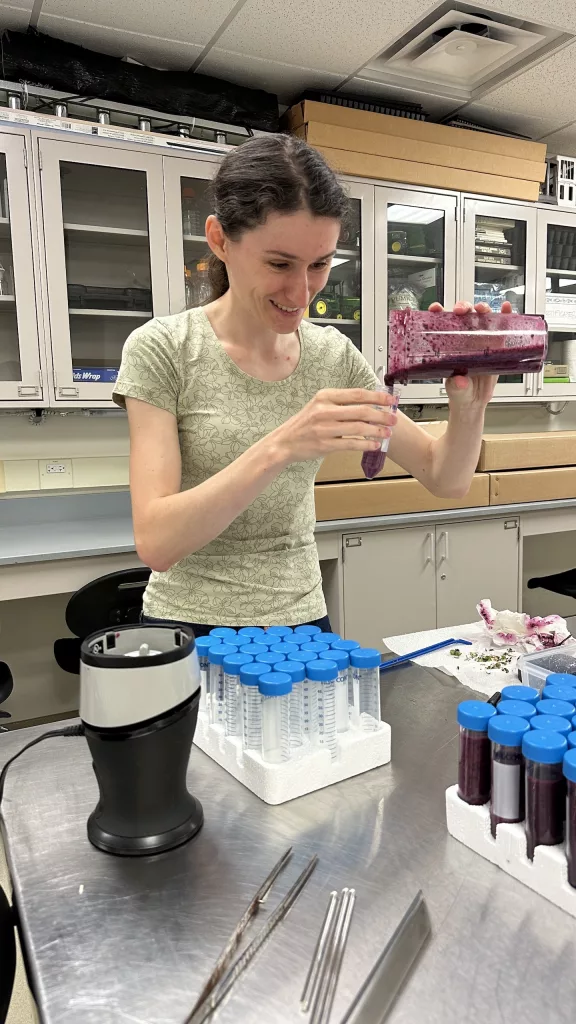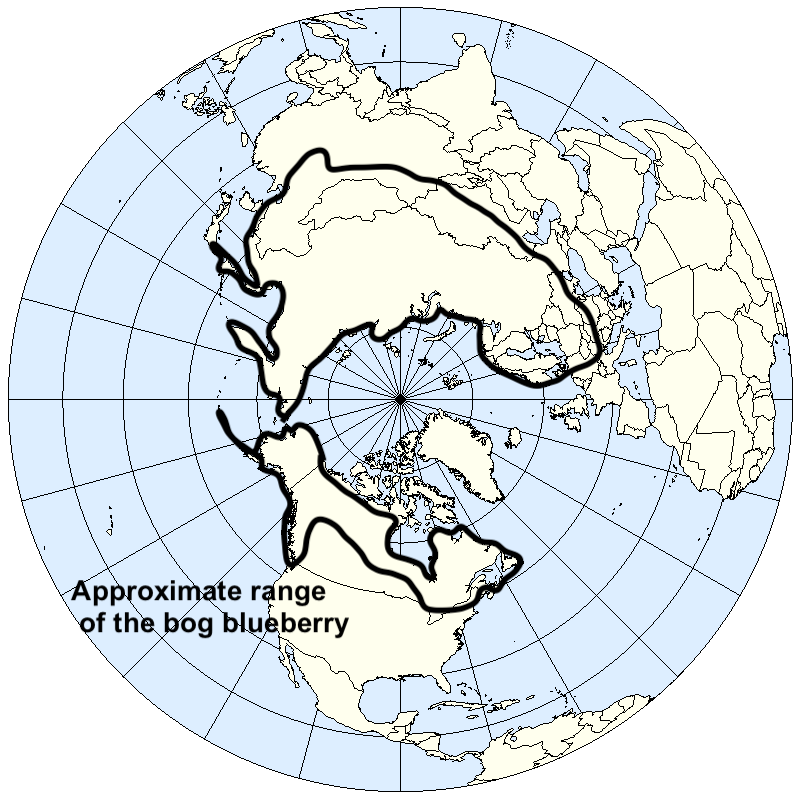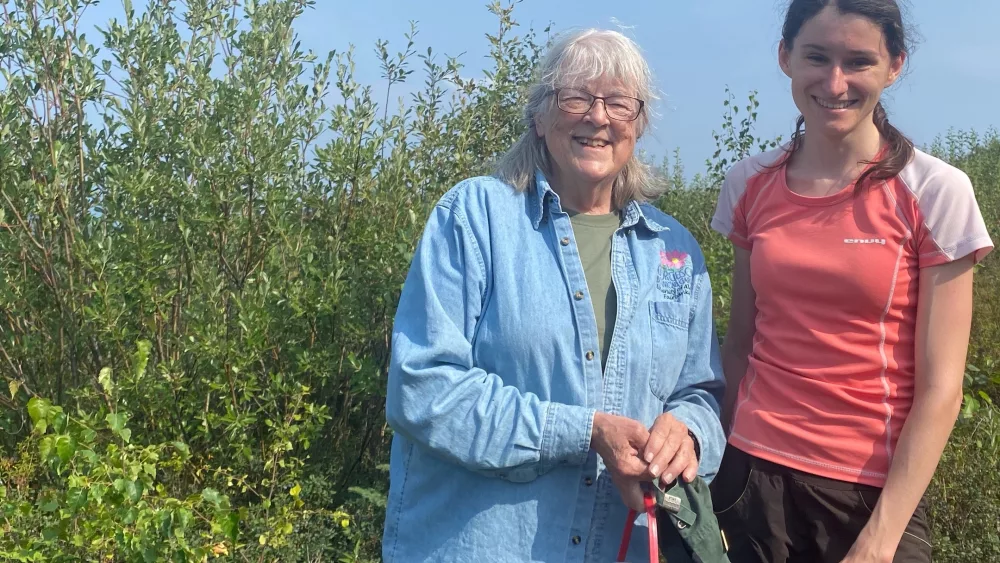Story by Ned Rozell

Pat Holloway, left, and Zuzana Vaneková pick blueberries on Murphy Dome near Fairbanks for Vaneková’s study to test the possible toxicity of the berries. Photo by Chris Dart.
Our beloved Alaska blueberry seems to have a bad reputation in parts of Europe and Scandinavia. There, people have called it the “mad berry,” “intoxicating berry” and “vomit berry.”
Zuzana Vaneková, a pharmacology researcher at the University of Vienna in Austria, recently visited Alaska to gather blueberries in order to help solve a mystery regarding the bog blueberry (Vaccinium uliginosum).
“Ever since I was little, people told me not to eat it because it would make me vomit and hallucinate,” she said.
Bog blueberries are a favorite of Alaskans and grizzly bears, but the fact that some people across the Atlantic have long avoided them was a puzzle to Vaneková. She studies the pharmaceutical properties of plants.

Bog blueberries Zuzana Vaneková picked when she visited Alaska recently fill a plastic container. Photo by Zuzana Vaneková.
Vaneková recently got funded on a study to analyze the berries for possible toxicity. She flew to Alaska to get samples “from a country where people never heard such tales. I wanted to know why it is such a prevalent story in Europe.”
As part of her first visit to Alaska, Vaneková met Alaska plant expert Pat Holloway, a professor of horticulture emerita at the University of Alaska Fairbanks. Holloway has performed her own research proving the health benefits of Alaska berries.
Holloway hosted Vaneková while she was in Fairbanks.
“She shows up at my home and the first thing I hand her is a blueberry muffin,” Holloway said.
Vaneková ate that muffin, just as she consumed “bowls of” bog blueberries in Europe and “of course” popped berries into her mouth on her Alaska gathering missions to Wickersham and Murphy domes near Fairbanks.
She freeze-dried the Alaska blueberries at a UAF lab for transport back to Vienna. There, she will determine the genetic signature of the Alaska berries, as well as look for compounds that might be toxic.

Zuzana Vaneková works in a University of Alaska Fairbanks lab where she freeze-dried Alaska blueberries in order to carry them home to Austria for analysis. Photo by Pat Holloway.
While in Fairbanks, Vaneková visited UAF’s Rasmuson Library and pored through a collection of Arctic books. She found one on shamanism in Russia in which the writer described Native peoples making moonshine from fermented bog blueberries.
“I think that might be the source (of the bog-blueberry folklore),” she said.
As for the health benefits of Alaska berries, Holloway performed studies and found bog blueberries had more antioxidants than cultivated berries from the Lower 48.
Vaneková knew of those studies, but had to come over and pluck some Alaska berries for herself. She said every Alaskan to whom she explained her quest was a bit incredulous at the claim that blueberries might be anything but wonderful.
“When you are over here everybody looks at you like you’re crazy for saying these claims,” she said.
Before flying back with her Alaska blueberries, Vaneková said she wanted to perform the study because every plant she knows in the Vaccinium genus is good to eat and she found the “vomit berry” description bizarre. She knew she could perform the science to debunk it.
“I don’t believe there is anything wrong with blueberries anywhere in the world,” she said. “But I have to prove it.”

The approximate range of the bog blueberry on Earth, drawn on a base map that was produced by Sean Baker.




